If you want to start speaking French, Swahili, German, whatever it is, but you're wondering – how long does it take to learn a language? – this is for you!
Ever heard of the famous Foreign Service Institute (FSI) Language difficulty chart? You'll see what it looks like in a second.
Whichever language you want to learn, it’s probably in there – Spanish, Russian, you name it!
And I’m going to show you all the rankings – easiest to hardest – and what they mean, so you can easily choose your next language to learn.
Pro Tip
No matter what language you want to learn or how long it takes, if you want to learn a new language fast, my top recommendation is StoryLearning®, a fun and effective method that gets you fluent thanks to stories, not rules. Find out more and claim your free 7-day trial of the course of your choice.
By the way, if you prefer watching videos to reading, hit play on the video version of this post below. Otherwise keep scrolling to find out – how long does it take to learn a language?
Table of Contents
Category 1: 23-24 Weeks (575-600 Hours)
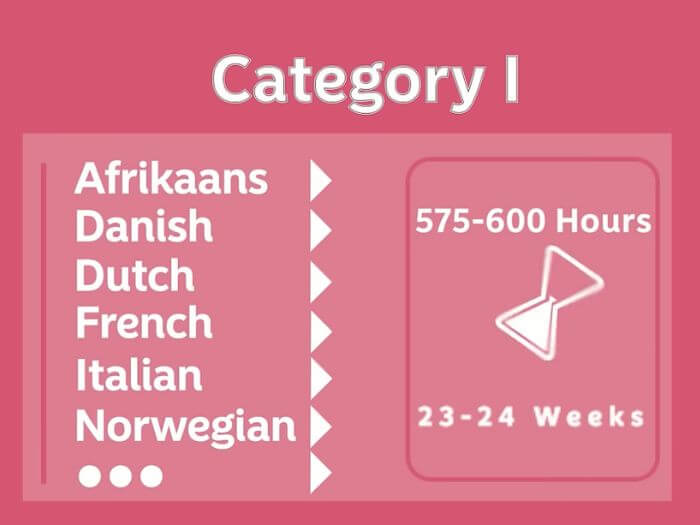
Okay, I might as well be upfront about this – The Foreign Service Institute didn’t actually design the chart below especially for you and me.
| Category 1 | Category 2 | Category 3 | Category 4 | Category 5 |
| 23-24 weeks (575-600 class hours) | 30 weeks (750 class hours) | 36 weeks (900 class hours) | 44 weeks (1100 class hours) | 88 weeks (2200 class hours) |
| Afrikaans Danish Dutch French Italian Norwegian Portuguese Spanish Swedish Romanian | German | Haitian Creole Indonesian Malaysian Swahili | Albanian Amharic Azerbaijani Bengali Bosnian Bulgarian Burmese Croatian Czech Dari Estonian Farsi Finnish Georgian Greek Hebrew Hindi Hungarian Icelandic Kazakh Khmer Kurdish Kyrgyz Lao Latvian Lithuanian Macedonian Mongolian Nepali Pashto Persian Polish Russian Serbian Sinhala Slovak Slovenian Somali Tagalog Takjiki Tamil Telugu Thai Tibetan Turkish Turkmen Ukrainian Urdu Uzbek Vietnamese Xhosa Zulu | Arabic Cantonese Japanese Korean Mandarin |
They designed it for people with far more dangerous jobs! I’ll come back around to they story behind this chart in a bit.
In the meantime, let's take a closer look at the easiest languages in the chart.
Romance languages like Italian are in Category 1. And in the world of language learning, Category I is like playing with kittens. Okay, maybe we’re starting with feral kittens, but you can tame them easily with a little patience!
And all of these languages are just like that – we’ve got our Romance languages, our Nordic languages, and these two cool sisters (Afrikaans and Dutch).
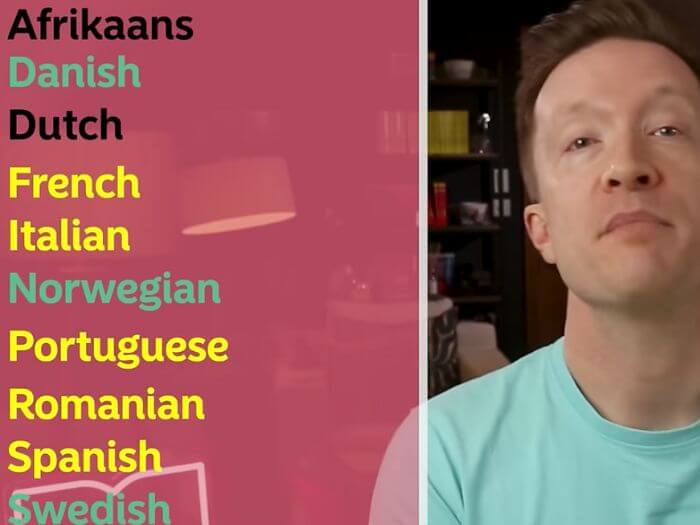
Basically, Category 1 is a mix of Romance and Germanic languages.
If you’ve never learned a language before, any of these make a perfect starting point – you could nail your first foreign language in about half a year.
Isn’t that fantastic? Let’s see what we’re looking at…
See these numbers here? 23-24 weeks (575-600 hours). They’re estimates for how long it takes the average Joe to reach a decent level in a Category 1 language.
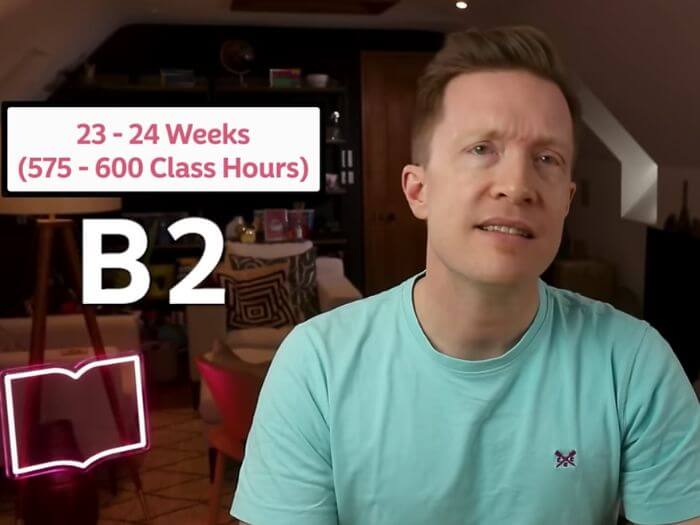
What’s decent? About a B2 level (i.e. ‘fluent' on the Common European Framework of Reference for Languages).
Think of how good you’d have to be to easily join in a conversation with native speakers, and you’ll get the idea.
You can talk about pretty much anything, even in a work situation,
And even when you make mistakes, it flows easily and they all know exactly what you’re on about. Sound good?
Of course, these 24-odd weeks are based on you actually putting in the work – you’ll be practising every day!
We’ll come back to what counts as a lesson. But first, you’re probably wondering: why are these 10 languages the easiest ones to learn?
Great question!
It’s because these are the languages most similar to English.
For starters, we share a tonne of words. Ever heard of a “restaurant” that serves “delicious chocolate”? Of course, you have.

These words are practically the same in French:
- restaurant, délicieux, chocolat
Now let's try Italian:
- ristorante, delizioso, cioccolato
See? Told ya. Romance languages have plenty of words similar to English, thanks to our Latin friends.
And those Germanic and Scandi languages also have plenty more in common with English. I’m going to choose a random sentence and see what happens when I translate. Check out the results below.
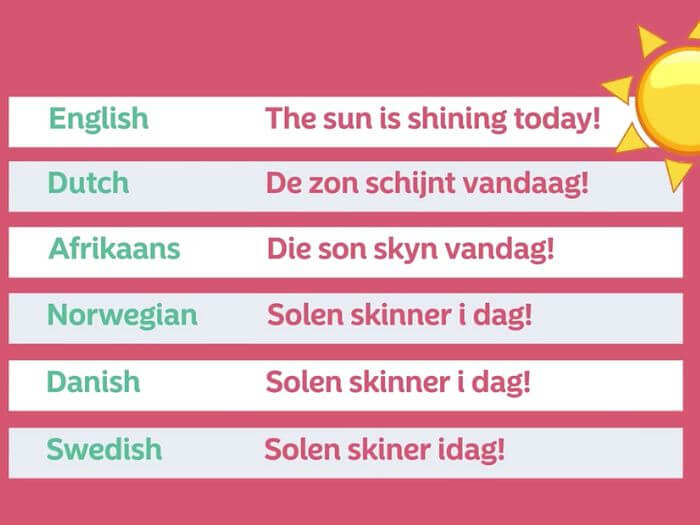
Thanks, Vikings!
Now as for Category One pronunciation, it can be a bit of a challenge – looking at you, French R and Spanish R.
And the hardest Scandinavian sounds are hiding in Danish – that’s my opinion and I'm sticking with it.
But it's not just about words.
This category has grammatical structures that, while not identical to English, won't exactly twist your brain into knots.
Which brings us to those ‘alleged' 600 hours it takes to learn one of these languages.
Obviously each person’s going to be a little bit different, and to be honest French is going to take a bit longer.
But does this mean you can get there playing DuoLingo for 6 months?
Anything else you might need?
Well…let me tell you how I did it. (By the way, here's the full story of how I learned 8 languages.)
In my case, French was actually my first foreign language and I was lucky because I got to live in Paris for six months and so I was exposed to the language quite a lot.
But the main thing that experience gave me was the confidence to know that a monolingual 19-year-old British kid can learn another language.
So when I started learning other languages like Spanish, Italian, Portuguese and so on, I had the confidence to say – if I really focus on this, I can be speaking well by the end of six months.
That confidence key. That's why it's so important to study with a good method and to put yourself in the right environment to create this structure around you that's going to help you stick to it and give 100%.
If you can do that then you can learn fast!
Would you try that yourself? Does it sound doable?
Wait until we level up – this is still kitten time.
Imagine preparing for a Cold War espionage mission and you’ve only got months to learn Russian! (Yeah I… can’t)
Which reminds me…
Why did the Foreign Service create these categories in the first place?
Well, it was the 1940s, World War 2 was over, and US diplomats suddenly needed to be everywhere. And they had to be extremely good in languages for some very important jobs. So ranking languages in categories helped streamline their training.
The rankings take into account all the big things – how hard the words are, how tough the grammar is, and so on.
We’re just hitching a ride here, leveraging the same classifications to choose our best language and live our best life!
And why not? If you ask me, it helps immensely to know how long Zulu might take!!
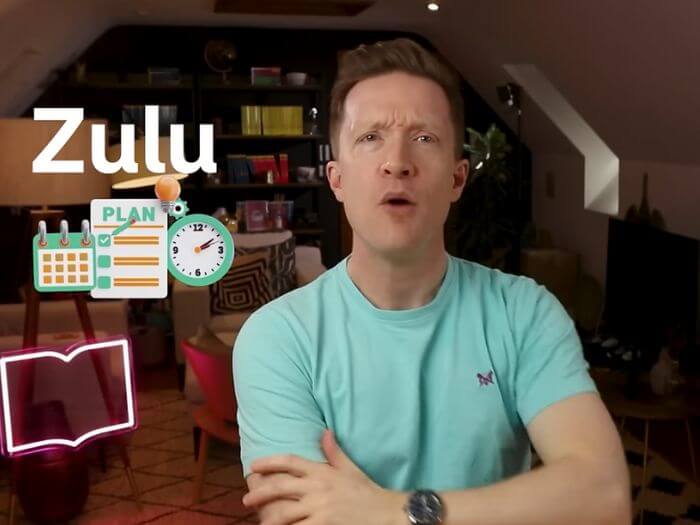
Meanwhile, things can only go uphill in a video like this, and there’s something very weird going on in Category 2.
Category 2: 30 Weeks (750 Hours)
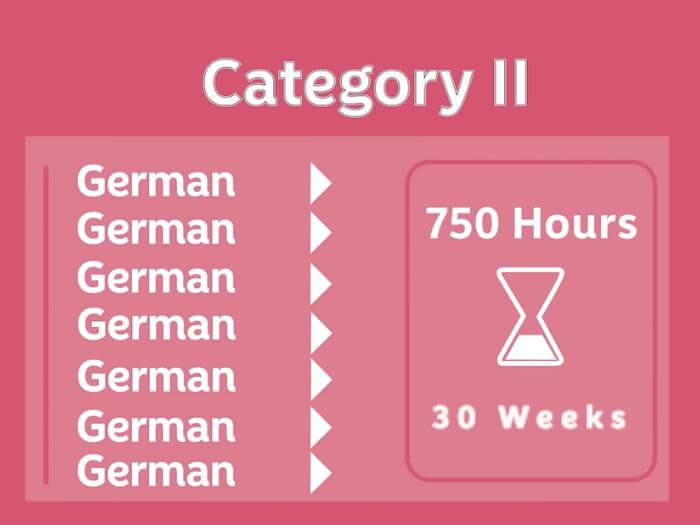
In Category II, we're stepping up the game a bit.
This lane is for languages similar to English, but with unique challenges, and might take you around 30 weeks to learn.
Here, we have languages like German and well, German. That's it – German is the only language in this category!
Go figure.
And that B2 level I mentioned is actually a really good goal.
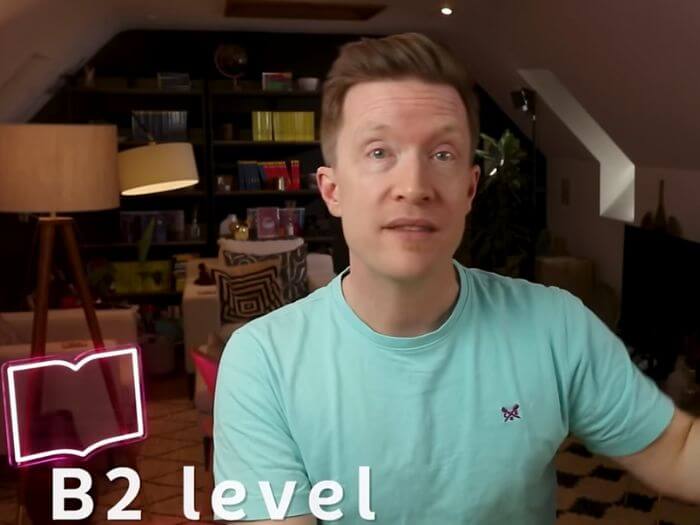
At this level, you’re very unlikely to ever forget what you’ve learned, and it gives you a wonderful ‘free' feeling in the language.
At first glance, German looks like a knotty forest of consonants. But it's closer to English than you might think – minus a few grammar quirks that bump it up to gruelling!
So yes, a lot of German words like wasser (water) or mutter (mother) are similar to English, and that’s the easy part.
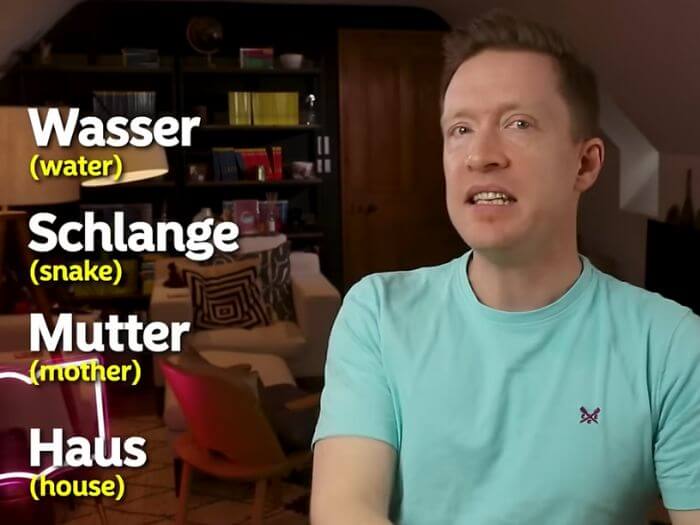
But then they go and stick them together and make longer words, and suddenly German looks really hard!
I have no doubt you already know all about German pronunciation. All those lichs and nichs…
But in spite of the craziness of German words that want to do your head in, sentences go subject-verb-object, just like English. Just watch out for verbs that sneak off to the end – that can happen too!
All in all, German getting its own category is justified by lots of irregularities with verbs, gendered nouns, and all those complicated cases. Have you seen these?
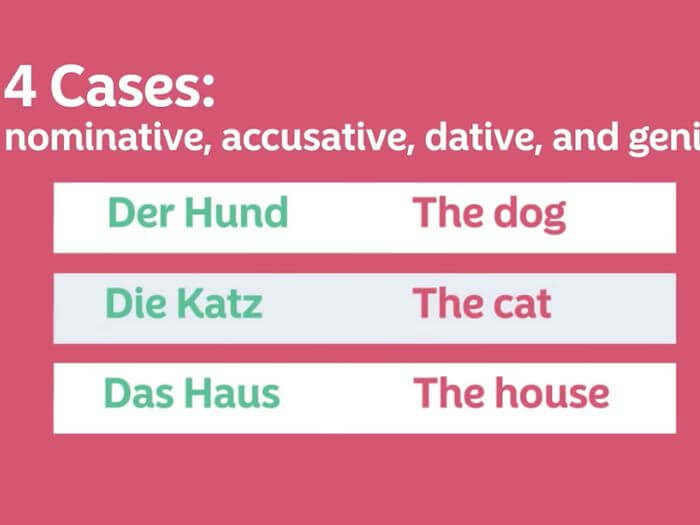
You have to learn the base article of each noun der, die, das as if they’re conjoined twins. But at least in this category, things are still very, very logical.
Category 3: 36 Weeks (900 Hours)
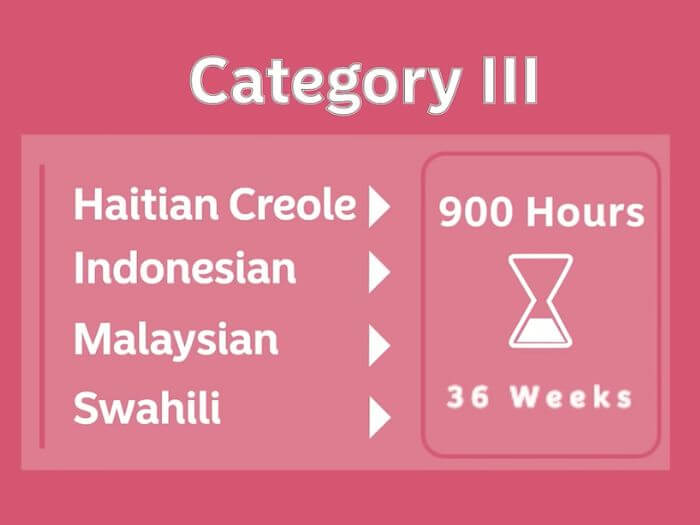
I love this category – things are starting to get mighty interesting.
Think of it like we're nicking into Narnia quickly from your old wardrobe – c’mon, go with me on this.
We’ve got Swahili, Malaysian and Indonesian in here, and at first you’re kind of recognising some things. The letters look normal, the sounds are easy.
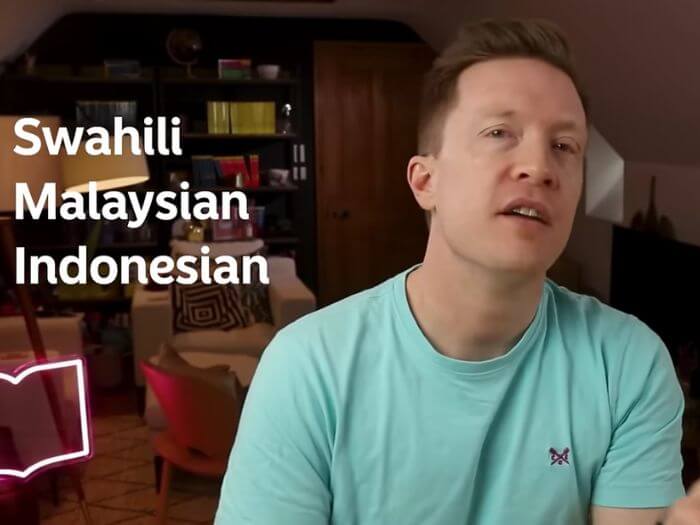
But hang on, hold my beer…
Well this is a different animal from English or German!
Swahili's verb conjugation is next level, and they have 9 noun classes – what’s a noun class?
In Swahili, it’s all about what category a thing is – for example, is it living or nonliving? Then it gets a special prefix or suffix.
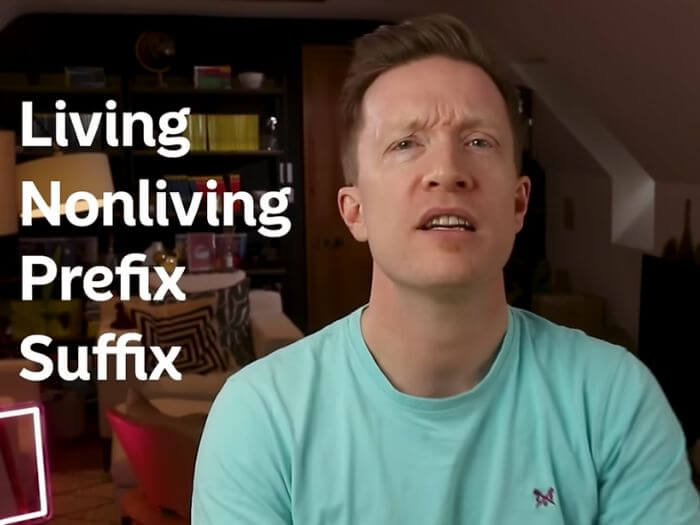
It works a lot like gender in Spanish or German, except it’s not just the adjectives that have to match the noun – just about everything has to match! Yep – Swahili can pack a lot of information into a word.
Easy! What else do we have?
Bahasa Indonesia shares some words like fantasi (fantasy) or kosmik (cosmic) with English thanks to Dutch colonisation.
All these riveting language connections.
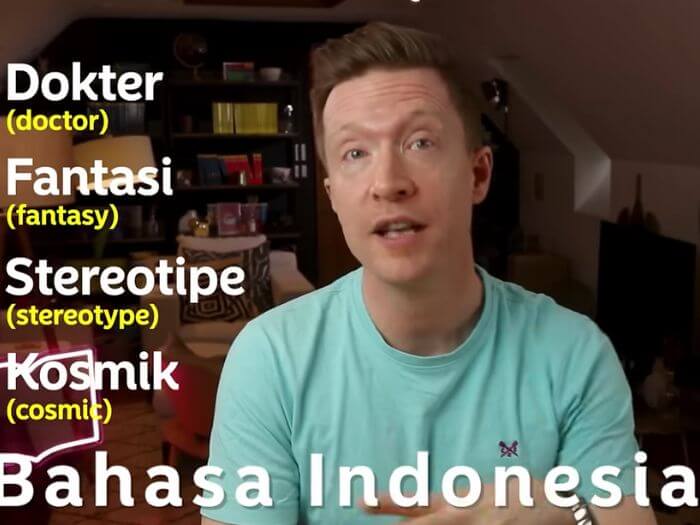
The pronunciation is phonetic, like Swahili. There are no tenses, no articles, no plurals. Wait – no plurals? That’s right – welcome to a new thing: reduplication.
You just repeat something to make it more. So if anak is “child”, to get “children” you say anak-anak.
What's not to love?
I can’t decide whether Indonesian or Swahili seem easier, but Category 3 definitely ramps up the challenge!
For this next category, I do hope you've brought your bear spray, because we're heading to bear country.
Category 4: 44 Weeks (1100 Hours)

We’re now up to languages that take 44 weeks of intensive learning, and you’re going to need those weeks.
Just picture Category 4 as a real adventurers' domain, where languages like Russian and Thai await with wild, exquisite scripts and bear-wrestling grammar.
You’re looking at languages with significant linguistic and cultural differences from English. There are more languages in this category than any other.
Look at this list!
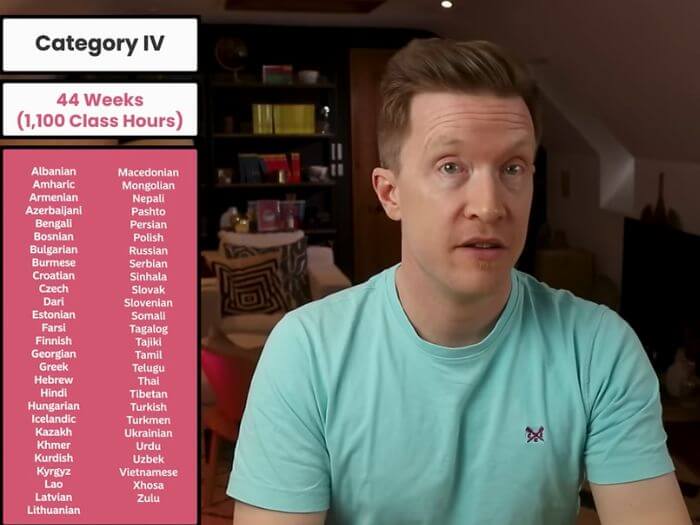
What do we have? There’s a bit of Asia, a bit of Africa, all the most challenging European languages, the Slavics, the Baltics, Icelandic…
So what’s new on the grammar menu?
Spelling is fiercer, verbs look intimidating, and the case systems are off the charts. Russian has six cases, Polish has seven, Hungarian eighteen (although some say 35!).
Told you – bear country. Which I love, of course. What else have we got?
If you’ve never seen the Thai alphabet, look at this beauty:
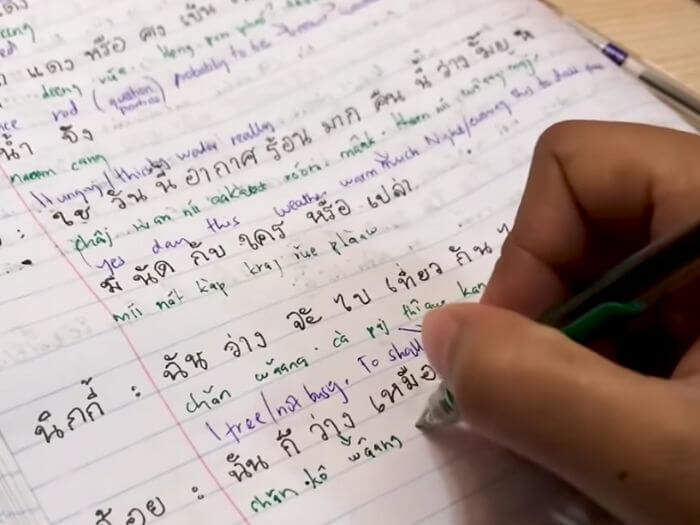
Thai is an intricate system of its own.
Let’s bust a myth quickly.
Most people think Languages with different alphabets, like Greek or Thai, are immediately much harder to learn. But learning a new alphabet is often one of the easiest parts of language learning – Kanji / Hanza excluded!
And you know what?
A lot of my students find the fresh start pretty darn helpful, without preconceived pronunciation rules, and yep – they do get really good at reading!
If you’re looking for story books in these languages, I have plenty right here.
Another new thing Category 4 introduces is tones: have you heard of them? Thai has five tones: high, low, rising, falling, and mid. Vietnamese has six!
Tones make a language much harder for English speakers, because one word can be pronounced in a few ways. And if your tone is off, you won’t be saying what you think you’re saying – awkward!

Thai has no tenses, but it does have these things called particles at the end of a sentence that show the tense or attitude.
In Thai, male and female speakers end their sentences differently. If you’re female, anything you say gets a kaa at the end, and if you’re male, you finish with khrap.
Don’t worry, just go with it!
These languages are certainly not all the exact same level of trickery, are they?
Let's put stars next to the hardest ones? So Estonian, Finnish, Georgian, Hungarian, Mongolian, Thai and Vietnamese are the toughest of this tough bunch.
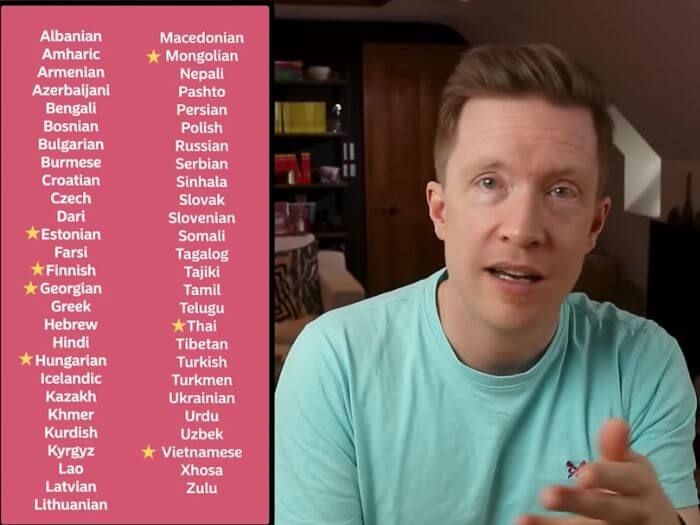
Hope it helps! And please remember one thing: it doesn’t even matter how hard a language is – any language can be learned. It’s all about strategy.
Now, I don’t know if you noticed something. There are so many wonderful languages here, but I’m not seeing Navajo or Balinese. What's going on?
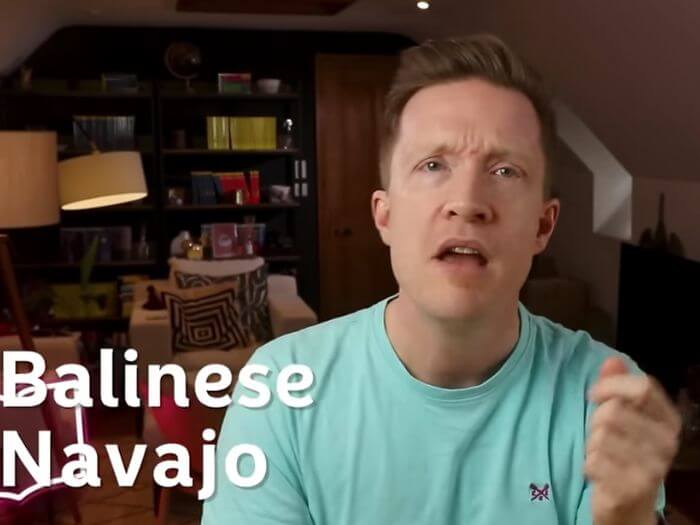
Turns out it’s pretty hard to fit 7000 languages into one chart! So FSI concentrated on languages that diplomats actually need.
Now the next one, I have to warn you, is a big jump, a monstrous jump.
Ready to add an extra 44 weeks onto your learning plan? I hope you’re feeling brave. Time to engage beast mode.
Category 5: 88 Weeks (2200 Hours)
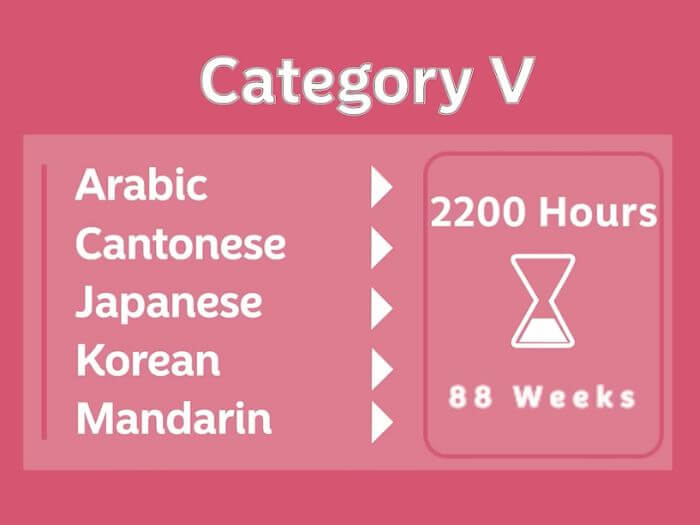
Throw out your keyboards – the alphabet’s finally gone rogue. And if you were thinking of climbing Mount Everest, you have the guts to tackle one of these!
What’s your poison – Chinese? Japanese? Arabic?
Category V is for those who really like a challenge.
It’s the hardest language category for English speakers – exceptionally difficult, some might say.
You’ve got these wildly unfamiliar scripts like Kanji with 1000s of characters, truly hard sounds, tones that are next level. And only the occasional hint of English.
And you might know an Arabic “hello” is marhaba , but Arabic has deep guttural sounds, emphatic sounds that are tricky to pronounce. The word for “coffee” taps deep in the throat.
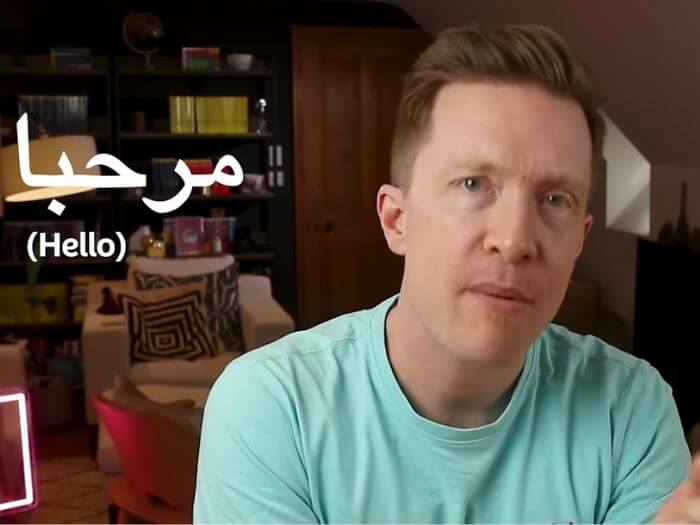
When you learn the beautiful script, you’ve got to go backwards – it flows from right to left. Amazing if you love writing, huh? Couldn’t be further from English, which is why it’s a number 5!
But at the heart of these extreme languages, they’re breathtaking, and absolutely, definitely possible to learn – I've learned a few myself. The rewards will come!
And just in case you’re wondering if I put in my 88 hours, I did, and then some, in three Category 5 languages – Arabic, Cantonese and Japanese.
What I found is that the mindset you've got to come at these Category 5 languages with is really one off. There's a like a vesting period, a time where you've just got to get used to the language.
You can't force it. You can't study your way through it. You've just got to expose yourself to the language for so long that brain starts to rewire itself.
There's this period of time that it takes to get used to the language and it will happen almost subconsciously. You've got to allow that period to take place and then the learning can really really start
So these languages are legitimately no walk in the park. But guess what, they're also the most rewarding.
How Long Does It Take To Learn A New Language?
So there you have it – how long does it take to learn a new language? The short answer is – it depends.
If you take on a Category 1 language like Spanish or Norwegian that's close to English, you could get to a decent level of fluency in 600 hours.
Languages that are further away from English in terms of grammar and vocabulary will take longer.
But in either case, it's going to take some serious motivation and dedication, plus the right method, to get fluent in any language.
Speaking of method, if you're looking for a fresh approach to language learning where you learn through stories, not rules, then StoryLearning can help. Find out more and claim your free 7-day trial of the course of your choice.

Olly Richards
Creator of the StoryLearning® Method
Olly Richards is a renowned polyglot and language learning expert with over 15 years of experience teaching millions through his innovative StoryLearning® method. He is the creator of StoryLearning, one of the world's largest language learning blogs with 500,000+ monthly readers.
Olly has authored 30+ language learning books and courses, including the bestselling "Short Stories" series published by Teach Yourself.
When not developing new teaching methods, Richards practices what he preaches—he speaks 8 languages fluently and continues learning new ones through his own methodology.










































